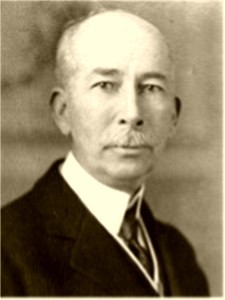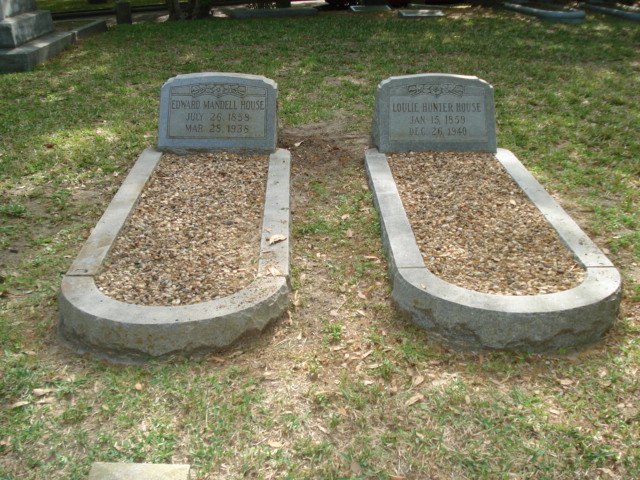|
Diplomat, Politician, Political Advisor. He was born in Houston, Texas, attended New England prep schools, followed by studying at Cornell University in Ithaca, New York in 1877. When his father died in 1880, he dropped out of school and returned to Texas to manage the family's business. During the 1890's he established a reputation as a notable behind-the-scenes Democrat political operator, helping to elect four men to the position of Governor of Texas: James S. Hogg (1892), Charles A. Culberson (1894, Joseph D. Sayers (1898) and S. W. T. Lanham (1902). After the election House acted as unofficial advisor to each governor. Hogg gave House the title "Colonel" by promoting House to his staff even though he had no military experience. He moved back to New York after selling the cotton plantation he had inherited and invested in banking. An ambitious man, House sought to exert influence at the national level, an aim he achieved with his alliance with Wilson, whom he first met in November 1911 and whom he backed in the following year's presidential election. In 1912, House published anonymously a novel called "Philip Dru: Administrator", in which the title character leads the democratic western U.S. in a civil war against the plutocratic East, becoming the dictator of America. Dru as dictator imposes a series of reforms which resemble the Bull Moose platform of 1912 and then vanishes. In 1913, House helped to pick the charter members of the original Federal Reserve Board. House became a close friend and supporter of New Jersey governor Woodrow Wilson in 1911, and helped him win the Democratic presidential nomination in 1912. He became an intimate of Wilson and helped set up his administration. House was offered the cabinet position of his choice (except for Secretary of State which was already pledged to William Jennings Bryan) but declined, choosing instead "to serve wherever and whenever possible." House was even provided living quarters within the White House. His position was weakened, however, when Wilson remarried because the new Mrs. Wilson didn't like him. He spent much of 1915 and 1916 in Europe, trying to negotiate peace through diplomacy, attempting to promote Wilson's goal of brokering a peace to end World War I. He visited most European capitals in 1915 and 1916 but his attempts at achieving a negotiated peace ended in failure. After the United States entered the war in 1917, House was responsible for working with Allied nations in order to organize manpower and supplies. House worked closely with Woodrow Wilson and Walter Lippmann in drafting the Fourteen Points Peace Program; was a member of the delegation from the United States to the Paris Peace Conference of 1919 and helped draw up the covenant of the League of Nations. He also worked closely with Wilson in drawing up the Treaty of Versailles. Due to disagreements in ideas and ideals, and personality, Wilson dismissed House in mid-March 1919. In the 1920's, House strongly supported membership of the United States in the League of Nations and the World Court, the Permanent Court of International Justice. He published four volumes of "The Intimate Papers of Colonel House" between 1926 and 1928, In 1932, House supported Franklin D. Roosevelt but did not attain the position in his inner circle that he had enjoyed with Wilson. Although he became disillusioned with the New Deal, he did not express his feelings of reservation in public. He died in New York in 1938. His body was returned to Houston and he is buried in Glenwood Cemetery
Notes:
|
 Emhouse:
Prominent political figure
Emhouse:
Prominent political figure